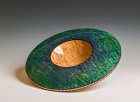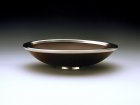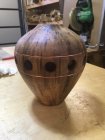I searched the forum and couldn't find any discussions with details so - watching a video I saw a turner put a thin groove in his work and then tap in thin wire that stayed in place. No audio in english and one of those from India with no details. He cut the ends very very close so the gap was barely visible. I thought this might be something to try that might actually not be too hard. Several discussions I found here about using metal powders and epoxy for inlays but wondering if anyone has used just copper wire or jewelers wire tapped into a thin groove. If so any tips on technique or wire to use?
Well, didn't think to just do a youtube search - duh. I see a few to look at so maybe info there I can use.
Well, didn't think to just do a youtube search - duh. I see a few to look at so maybe info there I can use.



